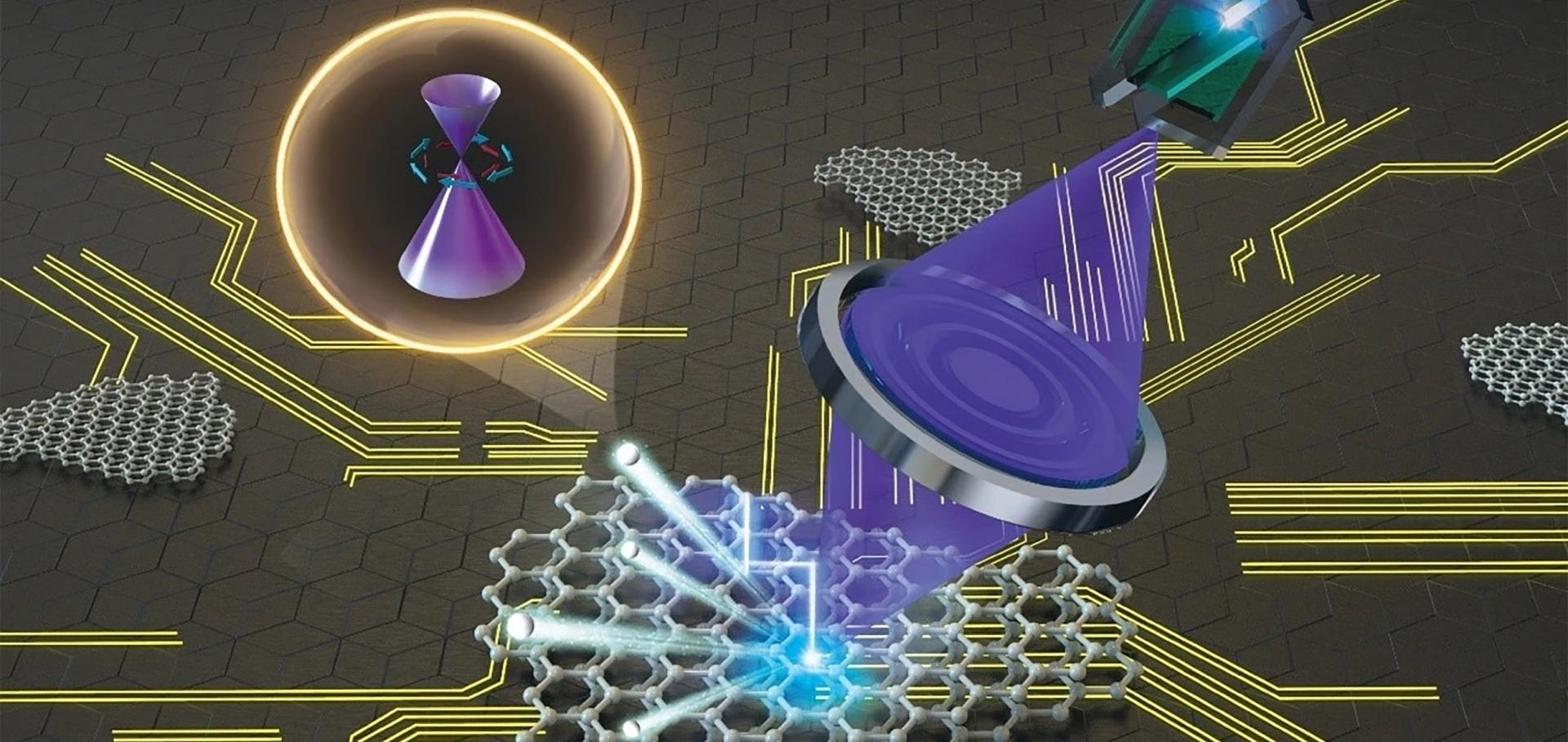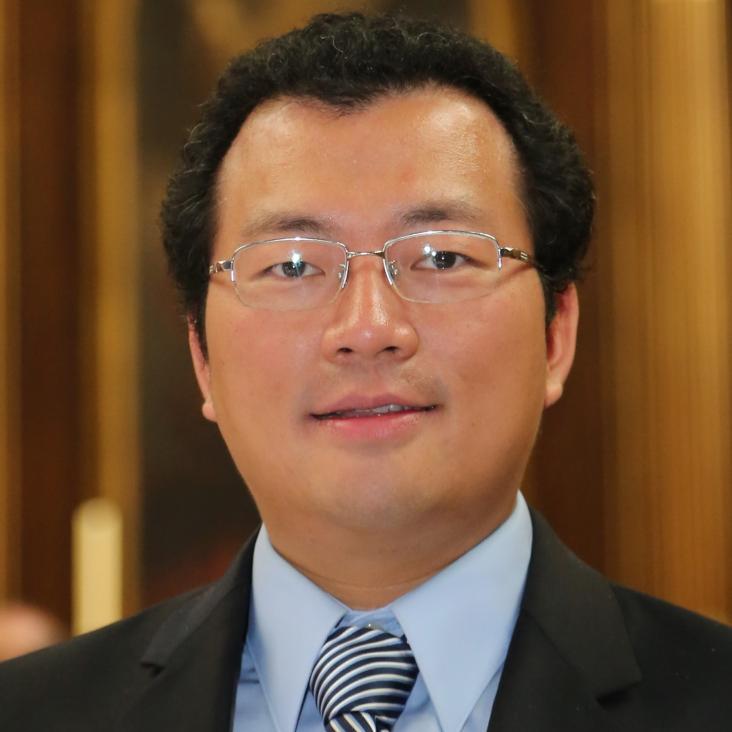Constructing the Fulde–Ferrell–Larkin–Ovchinnikov state in a CrOCl/NbSe2 van der Waals heterostructure
Nano Letters American Chemical Society 24:41 (2024) 12814-12822
Abstract:
Time reversal symmetry breaking in superconductors, resulting from external magnetic fields or spontaneous magnetization, often leads to unconventional superconducting properties. In this way, an intrinsic phenomenon called the Fulde-Ferrell-Larkin-Ovchinnikov (FFLO) state may be realized by the Zeeman effect. Here, we construct the FFLO state in an artificial CrOCl/NbSe<sub>2</sub> van der Waals (vdW) heterostructure by utilizing the superconducting proximity effect of NbSe<sub>2</sub> flakes. The proximity-induced superconductivity demonstrates a considerably weak gap of about 0.12 meV, and the in-plane upper critical field reveals the behavior of the FFLO state. First-principles calculations uncover the origin of the proximitized superconductivity, which indicates the importance of Cr vacancies or line defects in CrOCl. Moreover, the FFLO state could be induced by the inherent large spin splitting in CrOCl. Our findings not only provide a practical scheme for constructing the FFLO state but also inspire the discovery of an exotic FFLO state in other two-dimensional vdW heterostructures.Quantum-confined tunable ferromagnetism on the surface of a Van der Waals antiferromagnet NaCrTe2
Nano Letters American Chemical Society 24:32 (2024) 9832-9838
Abstract:
The surface of three-dimensional materials provides an ideal and versatile platform to explore quantum-confined physics. Here, we systematically investigate the electronic structure of Na-intercalated CrTe2, a van der Waals antiferromagnet, using angle-resolved photoemission spectroscopy and ab initio calculations. The measured band structure deviates from the calculation of bulk NaCrTe2 but agrees with that of ferromagnetic monolayer CrTe2. Consistently, we observe unexpected exchange splitting of the band dispersions, persisting well above the Néel temperature of bulk NaCrTe2. We argue that NaCrTe2 features a quantum-confined 2D ferromagnetic state in the topmost surface layer due to strong ferromagnetic correlation in the CrTe2 layer. Moreover, the exchange splitting and the critical temperature can be controlled by surface doping of alkali-metal atoms, suggesting the feasibility of tuning the surface ferromagnetism. Our work not only presents a simple platform for exploring tunable 2D ferromagnetism but also provides important insights into the quantum-confined low-dimensional magnetic states.Electronic correlation and pseudogap-like behavior of high-temperature superconductor La3Ni2O7
Chinese Physics Letters IOP Publishing 41:8 (2024) 087402
Abstract:
High-temperature superconductivity (HTSC) remains one of the most challenging and fascinating mysteries in condensed matter physics. Recently, superconductivity with transition temperature exceeding liquid-nitrogen temperature is discovered in La3Ni2O7 at high pressure, which provides a new platform to explore the unconventional HTSC. In this work, using high-resolution angle-resolved photoemission spectroscopy and ab initio calculation, we systematically investigate the electronic structures of La3Ni2O7 at ambient pressure. Our experiments are in nice agreement with ab initio calculations after considering an orbital-dependent band renormalization effect. The strong electron correlation effect pushes a flat band of dz2 orbital component below the Fermi level (EF), which is predicted to locate right at EF under high pressure. Moreover, the dx2–y2 band shows pseudogap-like behavior with suppressed spectral weight and diminished quasiparticle peak near EF. Our findings provide important insights into the electronic structure of La3Ni2O7, which will shed light on understanding of the unconventional superconductivity in nickelates.Evidence of strong and mode-selective electron–phonon coupling in the topological superconductor candidate 2M-WS 2
Nature Communications Nature Research 15:1 (2024) 6235
Abstract:
The interaction between lattice vibrations and electrons plays a key role in various aspects of condensed matter physics — including electron hydrodynamics, strange metal behavior, and high-temperature superconductivity. In this study, we present systematic investigations using Raman scattering and angle-resolved photoemission spectroscopy (ARPES) to examine the phononic and electronic subsystems of the topological superconductor candidate 2M-WS2. Raman scattering exhibits an anomalous nonmonotonic temperature dependence of phonon linewidths, indicative of strong phonon–electron scattering over phonon–phonon scattering. The ARPES results demonstrate pronounced dispersion anomalies (kinks) at multiple binding energies within both bulk and topological surface states, indicating a robust and mode-selective coupling between the electronic states and various phonon modes. These experimental findings align with previous calculations of the Eliashberg function, providing a deeper understanding of the highest superconducting transition temperature observed in 2M-WS2 (8.8 K) among all transition metal dichalcogenides as induced by electron–phonon coupling. Furthermore, our results may offer valuable insights into other properties of 2M-WS2 and guide the search for high-temperature topological superconductors.Evidence of strong and mode-selective electron–phonon coupling in the topological superconductor candidate 2M-WS2
Nature Communications Springer Nature 15:1 (2024) 6235


